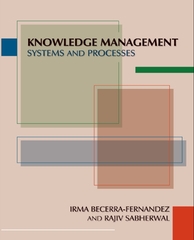Knowledge Management Infrastructure
|
There are different approaches in defining the knowledge management infrastructure. Lambe (2006, p.2) notes that knowledge and information infrastructure "mean all the things that combine to facilitate the flow of information and knowledge in support of the myriad tasks and actions and decisions that comprise organisational activity. Hence, information infrastructure does not just mean the technical IT infrastructure, although it includes that. It also encompasses human, social and organisational elements. Within your information infrastructure you will normally find information management policies, process and practice routines, standards, arrays of tools and resources that are visible to their users, conventions and assumptions, shared vocabulary and categories (eg taxonomies)." In this learning object we will follow the approach offered by Becerra-Fernandez, I. and Sabherwal, R. (2010). Knowledge Management: Systems and Processes. Armonk (N.Y.); London: M.E. Sharpe. Information and knowledge management infrastructure reflects the long-term foundations for information and knowledge management. In an organizational context, the infrastructure includes five major components:
* organization culture
|
 |
Licensed under the Creative Commons Attribution Non-commercial No Derivatives 3.0 License
Sirje Virkus, Tallinn University, 2012